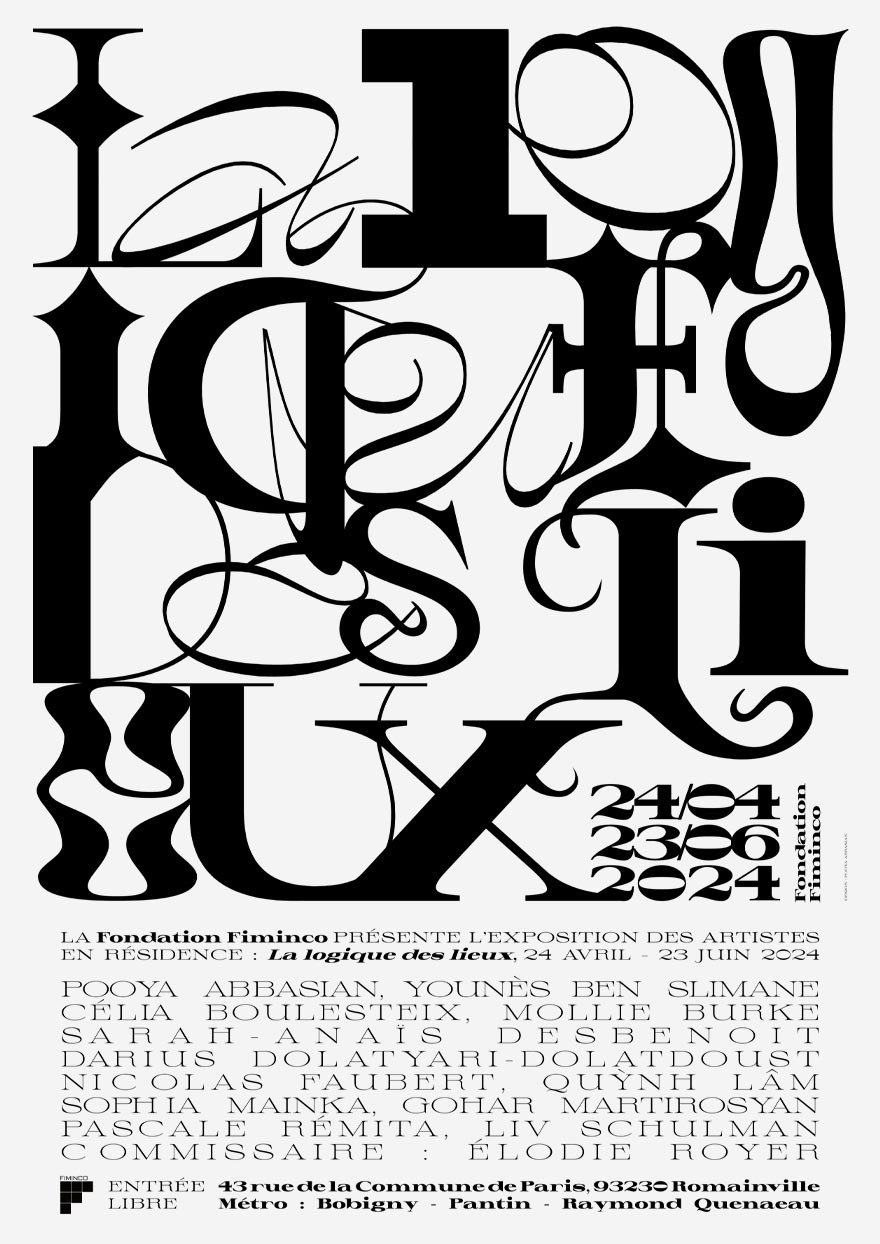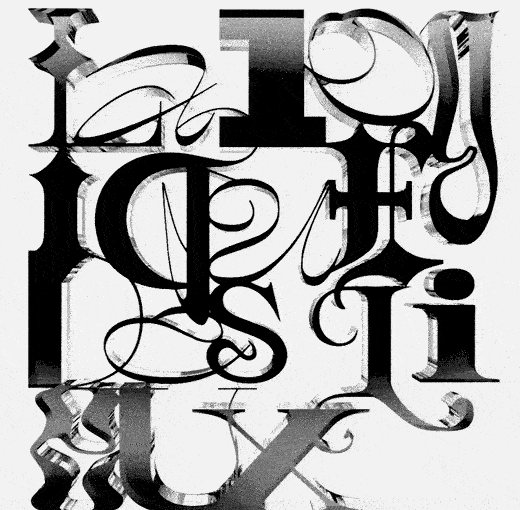
Poster for La logique des Lieux,
Residency exhibition at Fondation Fiminco.
La Logique des Lieux
In Romainville, (…) I wander the streets, camera always ready. I focus on abandoned places. I take close-ups of materials that inspire me: peeling paint, running rust, stains on walls and sidewalks, tangled vegetation.
These gestures, described by artist Simone Prouvé, who has been based for many years near the Fiminco Foundation in Romainville, offer a good introduction to the collective exhibition La logique des lieux and the process that brought it to life. Developed over several months in collaboration with the twelve artists in residence in the buildings of this former industrial wasteland, the exhibition brings together and materializes shared artistic experiences and reflections on the influence of our living environments on artistic practices.
What this exhibition hopes to share with the public is the way the architectures that surround us are not passive at all but are, in fact, characters in our lives—active participants in our movements, personal and collective history, and our emotions. Beyond their horizontal expanses, their vertical depths and invisible structures hold memory, gestures, and flows that have shaped them; in short, the meaning of these places and what ties us to them, both in the past and in the future.
What do places do to us, and conversely, what do we do to them? How do they influence artistic practices? If logic, by definition, is the analysis of thought forms that allow the development of a discourse, then to explore the logic of places would be to observe and listen to them more closely, to understand the interactions that characterize them, both on their surface and in their historical depth.
Through imagination, the works gathered in the exhibition attempt to highlight the ability of places to release forces and narratives, as well as the connections that bind us to them—whether ancestral, living, emotional, or ecological. Through multiple forms and perspectives, they address both the influence of real and immediate territories, like those the artists traverse daily (Romainville and eastern Paris), and more distant horizons—those transmitted or inherited that we carry within us, these invisible architectures.
